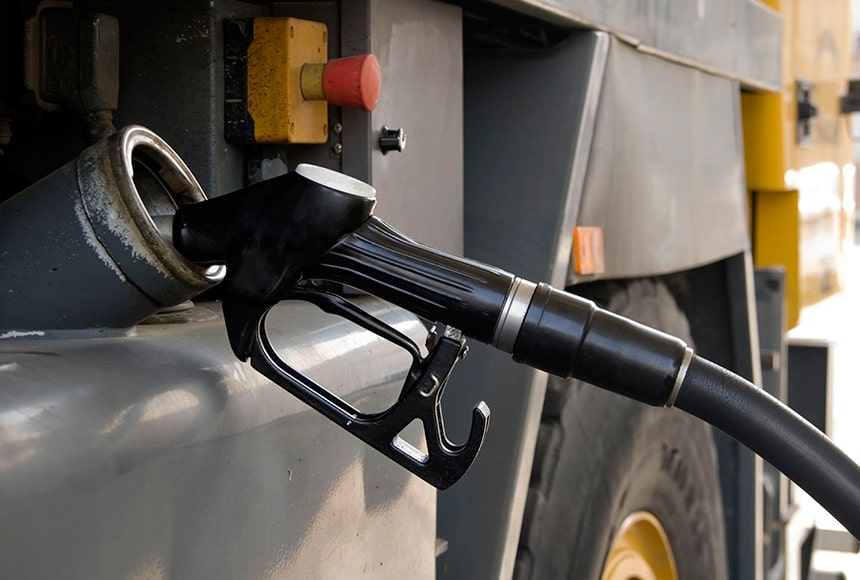
Fuel
monitoring
Reduction of transport expenses from the very first day of implementation
Protection against unauthorized fuel drain
Real consumption detection
Improving labor discipline

- Fuel drain
- Fuel burnout
- Mileage cheats
- Low level of labor discipline
Fuel monitoring is something that absolutely any company that has mobile workers comes to eventually. Based on statistics, according to which fuel consumption is usually overestimated by drivers by 20-30%, you can only imagine how much money you lose every day, week, month … year. But what if your fleet has 10, 20 or 500 cars? These are huge losses that we intend to return to you!

Fuel consumption monitoring ways

The fuel write-off rate per 100 km (city, highway in winter and summer) is determined by the control refueling method. These four metrics are entered into the BelTransSputnik System in the Vehicles/Settings section.
How it worksFurther, the System divides the entire route of the car into ‘urban kilometers’ and ‘suburban kilometers’. Moreover, the division into urban and suburban areas is made not by the administrative boundaries of cities, but by the real mode of movement: the vehicle drove slowly and with stops — a city kilometer. The car drove fast without stops — a suburban kilometer.
In urban areas, the System applies the consumption rate per 100 km in the city entered by you. In suburban areas — the norm for the track. Then the System gives the final result: how much fuel the car spent in total, taking into account the norm and the actual mode of movement that you set experimentally.
This achieves the fairness of the write-off of fuel in the eyes of the driver. If he was driving along the ring road at a speed of 80 km / h without stopping, then the rules for the highway apply, although it is included in the administrative boundary of the city.
And vice versa: if the driver was slowly driving around an accident on the highway, then the city norm will be applied in this section, although geographically this section is a highway far from the city.
- simplicity
- fairness and clarity for the driver
- no need to buy additional sensors
- no need to interfere with the car’s fuel system or connect to engine elements
- the basic fuel write-off rates entered into the System must be included in the contracts with drivers and must not exceed the Transtechnika norms for this type of vehicle

For large state-owned enterprises, it is very important not to waste time proving to the driver the correctness of the fuel write-off figures. The system should quickly and reliably calculate fuel consumption in full accordance with the Methodology of the Ministry of Transport from your smartphone
How it worksThis technique is very complicated: you need to take into account the population of the cities through which your car passed, the weight of the transported cargo in each section, the temperature along the entire route at the beginning of each working day, mountainous sections of roads and much more. Therefore, we automated the calculation according to the Methodology of the Ministry of Transport, introduced the borders and population of cities, mountain roads into our System. We request from the weather archives the temperature at the start of the car’s movement in each region from the nearest certified weather station. We give the opportunity to enter the depreciation coefficient on the car, enter the weight of the cargo on each shoulder of transportation from the TTN, and much more. And we issue the final fuel consumption for the flight ‘by the letter of the law’, i.e. in full compliance with the Methodology of the Ministry of Transport.
Now, in-depth acceptance and processing of driver reports takes 2-3 minutes instead of 1 hour.
Spend your accountant’s free time on more important issues.
- full compliance with the law
- speed of calculation
- no need to convince the driver of the correctness of the calculation
- there is no full automation

An additional fuel level sensor — an electronic ruler — is installed in the fuel tank. FLS is connected to the GPS/GSM/Glonass Vehicle Control Module installed in the vehicle cab.
How it worksThe tank with the FLS is calibrated with small portions of fuel: each fuel level is assigned to the FLS output signal.
The control module transmits information from the FLS to the BelTransSputnik System and then to your computer screen.
This is the most famous simple and unreliable way to control fuel. FLS were originally designed to measure the calm level of fuel in underground tanks at gas stations. Some were even included in the register of measuring instruments for this task. But it is contrary to common sense to measure the fuel level in the tank of a car shaking on the road with the FLS.
A feature of the LLS is that even with a stable fuel level, its typical error is 1%. This means that with a tank volume of 500 liters, you can drain with impunity in portions of at least 5 liters.
And if the driver makes short stops and drains fuel on them, then he can drain not 5, but 10 liters, masking his drains by shaking the fuel in the tank, which may well be +/- 10% of the tank volume.
The problem is also that the driver can drain the fuel through the ‘return’. And any FLS is helpless in these cases: the fuel leaves the tank faster than usual, but the reason is not clear.
The most useful side of the FLS is the ability to control the completeness of fillings. In the BelTransSputnik System, it is possible to compare in the analytical report the data on gas stations that the gas station sends you with the data on the actual amount of fuel that got into the tank of your car according to the readings of the FLS.
True, today all gas stations have video cameras, and gas station networks are ready to send you video reports about the process of refueling your car for free. Therefore, your driver will not be able to refuel a nearby bus at a gas station without FLS.
Taking into account the popularity of FLS among some of our customers, we use those sensors that not only display the current fuel level in the System, but also process these values. Now our FLS transmit to the System the most probable value of the fuel level, obtained through the use of mathematical statistics methods. That is, the FLS measures the value of the fuel level, for example, 100,000 times per minute, and gives only one most plausible value. This circumvents to some extent the problem of fuel splashes in the tank. But never completely solve it.
For these reasons, none of the FLS existing in our country is included in the register of measuring instruments as a fuel level gauge in a car tank for the needs of legal metrology (i.e. for financial accounting).
Nevertheless, for those of our customers who use FLS, we support the ability to determine not only the completeness of fillings, but also fuel consumption according to FLS. To do this, the System contains analytical reports on FLS, calculation of fuel consumption on FLS, including for two tank trucks with 2 FLS, as well as for vehicles with tanks of complex shape, where you have to install more than one FLS in one tank for averaging fuel level indications for several FLS.
- easy to understand the principle of fuel control
- cost
- it is easy for driver to deceive the FLS: drain through the ‘return’ or drains in small portions

An additional device, similar to a water meter, is cut into the fuel line — a fuel flow meter.
How it worksIn it, in the fuel flow, an impeller rotates like a water mill. Each rotation of the impeller is 30 ml of fuel, for example. With each revolution, the impeller opens/closes the contact, which creates a pulse drop at the flow meter output. The number of pulses at the output of this device, multiplied by 30 ml, is equal to the amount of fuel passed through the flow meter.
The error of the best mass flow meters is 1-2% in the range from 4 to 200 liters / hour.
In diesel engines, there is a ‘return’ — a line for dumping part of the fuel back into the tank after it has passed the engine head and heated up. Therefore, it is necessary to install two independent fuel flow meters: one for the direct fuel supply hose and one for the ‘return’. And consider the difference in fuel between the direct and return lines.
Sometimes one differential flow meter is installed, which has two impellers: one on the direct line + one on the ‘return’. He himself counts the difference: he takes away the ‘return’ from the ‘direct’ fuel. But the cost of this differential flow meter is not lower than two ordinary flow meters. Therefore, savings will not be possible.
The main advantage of the flow meter is that some of them are included in the register of measuring instruments for the needs of legal metrology, i.e. for financial accounting.
However, any fuel flow meter is a tiny precision device. The fuel passing through it creates deposits on the inner walls of the flow meter and on the impeller. Similar to how cholesterol is deposited on the walls of blood vessels.
To prevent the impeller from sticking, once every 2-3 months the flow meter must be removed and washed in a solvent. If this is not done, it can jam and block the flow of fuel to the engine. The vehicle will not start.
The risk of not starting the engine increases many times in winter. Therefore, Gosstandart recommends removing flow meters altogether and replacing them with transit pipes during the cold season.
That is, in winter, when the greatest fuel consumption requires maximum control, it is during this period that the flow meter creates the greatest problems.
But the main reason why flow meters are leaving the scene of fuel control systems is the replacement of the car park with Euro-5, Euro-6, etc. In these modern engines, more than 90% of the fuel sucked from the tank is discharged through the ‘return’ back into the tank. That is, only about 1/10 of the fuel that has passed through the flow meter enters the engine injectors. And 9/10 drains back into the tank.
We do not want to control the fuel that has passed through the flow meter, but the fuel that has directly entered the engine injectors. Therefore, the fuel measurement error at the injectors increases by 10 (!) times, since only 1/10 of the fuel from the flow meter reaches the engine injectors.
Another problem is violation of the Rules of the Road, which directly prohibits intervention in the fuel system of a car.
In addition, a warranty car can be removed from the warranty if it detects interference in its fuel system: the flow meter is an additional obstacle to the flow of fuel into the engine.
- can be applied on older engines and cars with regular maintenance
- high price and laborious maintenance
- not suitable for new vehicles
- violates traffic rules and voids the car warranty

BelTransSputnik connects the GPS/Glonass/GSM Vehicle Control Module to the on-board Computer Area Network (CAN) or On Board Diagnostic (OBD) of your vehicle
How it worksWe read actual fuel consumption data from CAN or OBD buses and transfer it to your computer. And not only data on fuel consumption, but also on the fuel level in the tank (according to the readings of the factory FLS of your car), instant fuel consumption and its temperature, engine speed, etc.
How is this possible?
The car manufacturer puts a new engine on the measuring stand, connects a lot of precise sensors to it. And then drives the engine on the stand in the possible modes. While fixing fuel consumption.
Having received accurate data, the manufacturing plant puts the entire data set into the on-board engine control controller of your car. And this controller outputs to the CAN and OBD buses data on fuel consumption, which were once obtained experimentally in similar conditions.
Practice has shown that in new cars, the discrepancy between CAN / OBD fuel consumption readings and fuel consumption at a control filling station is 1-3%. In old cars, 2-7%. At the same time, the error also increases due to the wear of the engine injectors, and decreases after replacing the injectors with new ones.
The disadvantages include the possibility of ‘kulibins’ in some cars to introduce a multiplying factor to fuel consumption via the CAN bus. However, this is revealed when diagnosing a car at a dealership.
Measurements of fuel consumption of various modern vehicles in various driving modes, with different vehicle loads and under different temperature conditions, carried out by the specialists of BelTransSputnik together with the Central Research Institute of Information Technology Transtechnica, showed an average error in determining fuel consumption of 1-1.5%.
- reliability and accuracy
- transparency
- a small inaccuracies
- the need to periodically diagnose potential interventions in CAN at the dealer

For construction and special equipment, the legitimate way to write off fuel is to calculate according to the standards of Transtechnika, which indicate fuel consumption per machine hour for different types of work.
How it worksThe machine-hour is understood as the time during which the driver actually performed the given work.
However, in practice, it often looks like this: an excavator works at a remote site for a working day of 8 hours. And the driver demands to write off fuel for all 8 hours of bucket operation.
After installing the BelTransSputnik System, it turns out that in fact, for 3 hours out of 8, the tractor engine did not work at all. That is, the driver appropriated 3/8 of the fuel for himself.
Our Control Module gives a clear answer for how long the engine has been running.
This is done in various ways:
- When the engine is running, the voltage in the vehicle’s on-board network rises. By setting the voltage threshold, you can determine if the engine is running.
- On some faulty equipment, during operation, the voltage is not stable. In this case, the switched on ignition is taken into account.
The only way to deceive may be the incomplete performance of the work: the operation of the crane (excavator) at idle without raising the boom, driving through a snowy road without lowering the blade, brush, etc.
Therefore, in addition to this method, it is recommended to control the work done through the position sensors of the boom, brush, blade, etc. Or set up a video recorder. Or to carry out selective inspection control of the completeness of the work performed.
- does not require additional sensors installation
- no need to intervene in the car’s fuel system
- it is recommended to install additional sensors for the operation of attachments or a video recorder, or the participation of a responsible person to control the actual work performed

BelTransSputnik specialists have created several mathematical models of engine operation in cooperation with manufacturers of domestic equipment.
How it worksThese models cover all the most common types of engines used in road wheeled vehicles, tractors and loaders.
In order to determine fuel consumption, we connect our GPS/GLONASS/GSM Vehicle Control Modules to the car engine and read its various parameters: turns, degree of pressing the gas pedal, temperature, torque, etc.
After the installation of our equipment, the System is calibrated according to actual measurements of fuel consumption or according to passport design values of fuel consumption, produced by the manufacturer of automotive equipment.
The fuel consumption calculated by the BelTransSputnik System in this case has a typical inaccuracy of 3-5%. It takes into account many key parameters, including engine load.
- simplicity and reliability
- great economic effect
- increased labor intensity during the installation of Transport Control Modules
- the client’s participation in the calibration of the System is recommended
Which monitoring way to choose

Our experts recommend using smart calculation methods wherever possible.
They do not require the purchase of expensive sensors and are not tied to the reliability of their work. In addition, smart calculation methods are very difficult for the driver to deceive. What cannot be said about any sensors, which always are under the threat of driver’s influence.
We recommend starting cooperation with the installation of the BelTransSputnik GPS Monitoring System, since it is more cost-effective than any fuel consumption sensors.
Our customers result
Let us help you avoid extra fuel expenses thanks to the reliable data of the BelTransSputnik monitoring system



